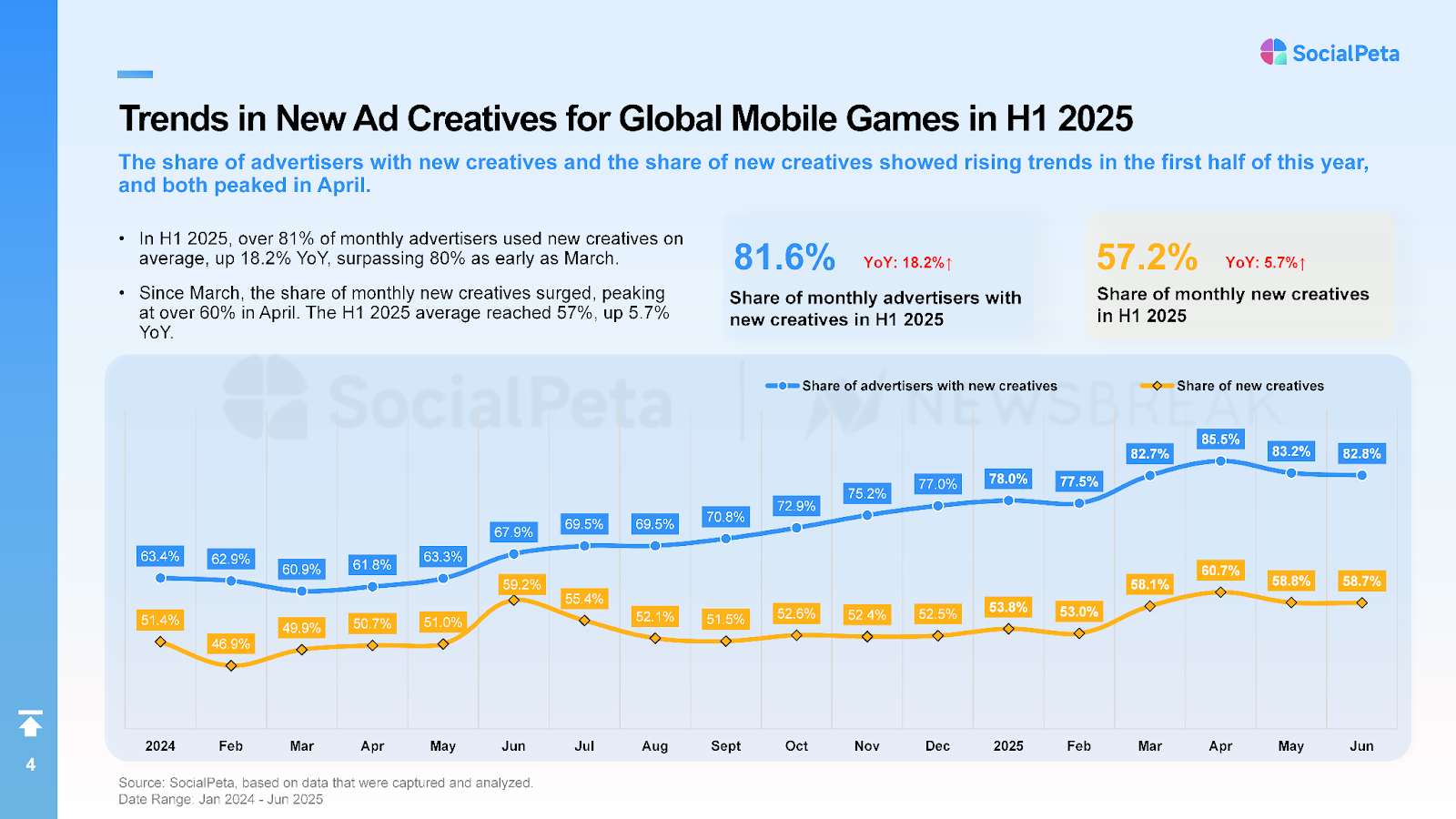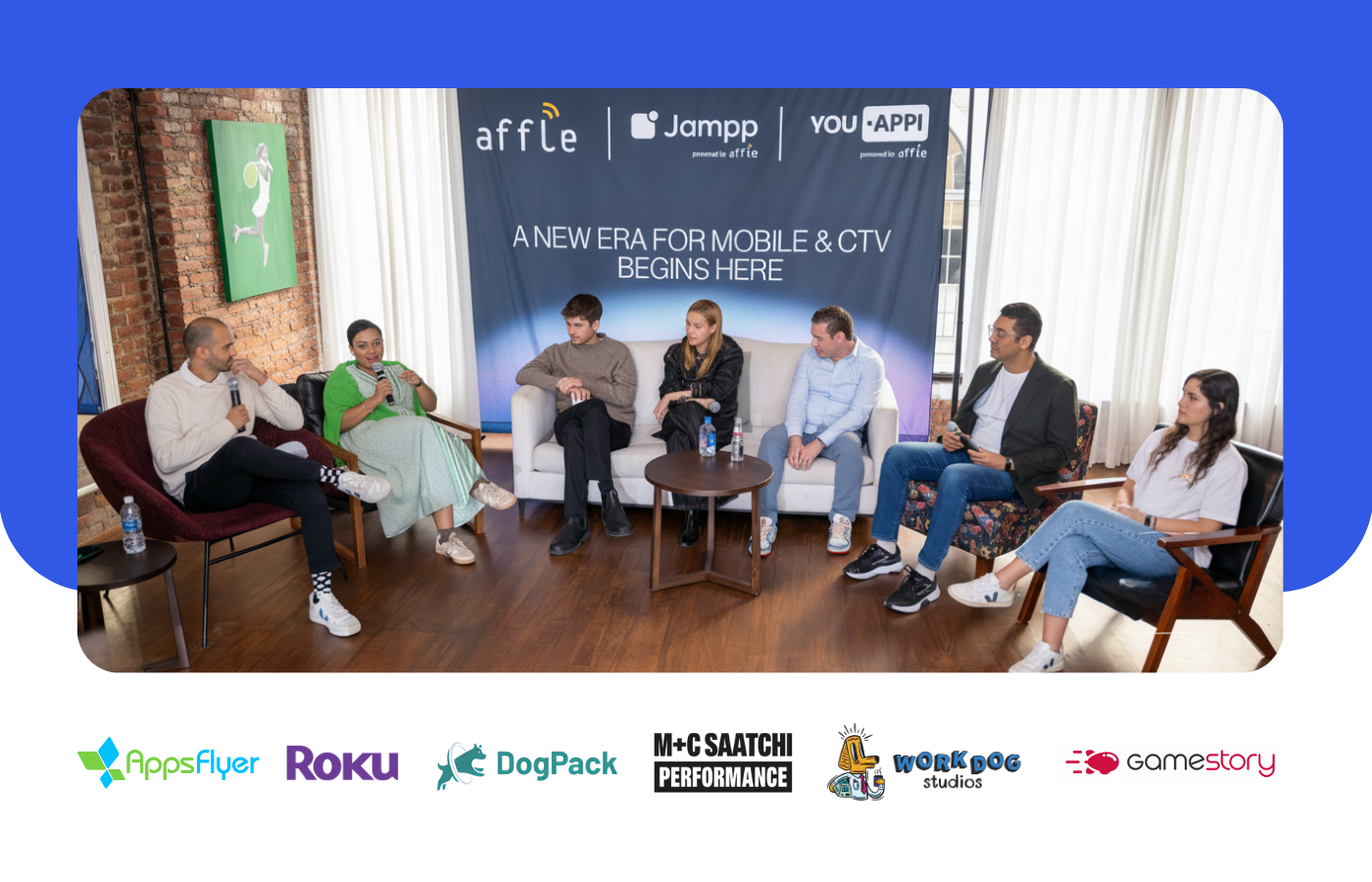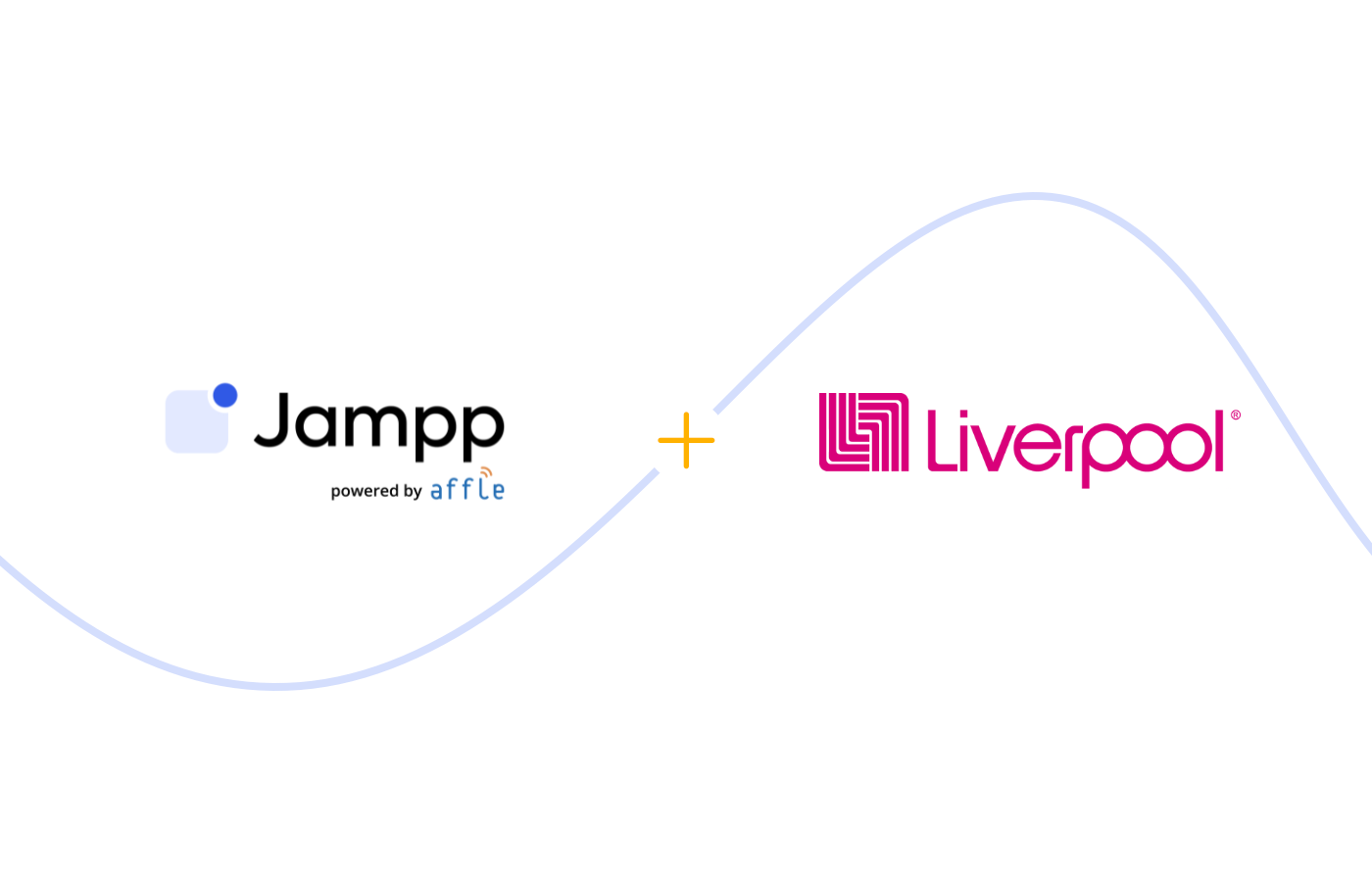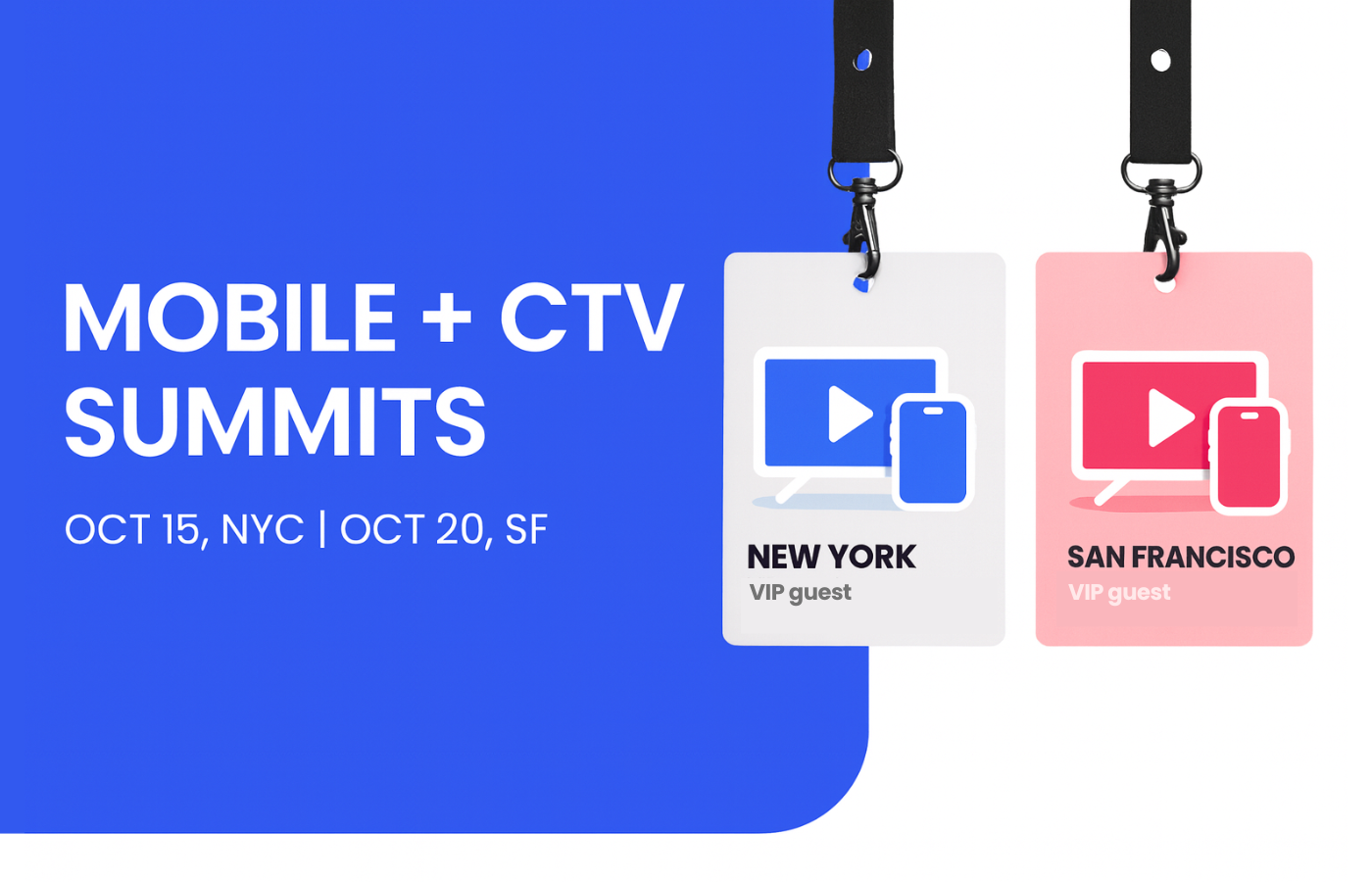Inside H1 2025 mobile games: Q&A with SocialPeta
Learn what’s driving mobile game marketing in H1 2025 in our interview with SocialPeta.
October 8, 2025

Call it what it is: a pivot from volume to user value. When it comes to mobile games, the teams pulling ahead are targeting higher-quality cohorts, measuring incrementality, and letting creative support the strategy.
To unpack what this means for mobile marketers, we sat down with Summer Liu, CMO at SocialPeta, whose team analyzed H1 2025 mobile game marketing trends across genres and regions. Let’s get started 👇
Jampp: Thanks for joining us, Summer. Set the scene for us: where’s the pressure in H1 2025, and which mobile game genres are evolving fastest?
SocialPeta: Mid-core and hardcore categories like SLG and RPG are saturated, so we’re seeing teams experiment with hybrid models—for example, tower defense + idle (defend waves of enemies while progression continues passively between sessions) or RPG + simulation (character growth plus base-building and resource loops). These blends refresh engagement and broaden the addressable audience.
On the market side, Casino is where the heat is—more advertisers, more creatives, more noise. Casual lost a bit of ground. If you’re planning your mobile growth strategy, that’s your signal: in crowded genres, test hybrid angles or fresher hooks; if you’re in Casino, assume a higher creative bar and tighter testing to stand out.

Jampp: Just now, you highlighted Casino as one of the fastest-growing categories. With more players chasing the same users, what’s the smartest way to capitalize on that demand, and what separates winners in this space?
SocialPeta: The short answer: stay away from “light traffic.” By that, I mean broad, low-intent audiences that look efficient upfront but don’t stick in the long term, so your ROAS washes out. In H1 2025, budgets moved toward higher-quality segments with stronger retention and LTV, especially on iOS—and when you can optimize to downstream events (tutorial complete, deposit, level milestones), precision beats volume.
Jampp: Right—if users don’t stay or monetize at all, spend looks good on paper but not on payback. Now the last mile—which creative approaches are turning that quality into conversions?
SocialPeta: We consistently see two approaches work with higher-intent audiences. The first is what we call the thrill spot: getting to the core gameplay moment within the first two or three seconds so viewers immediately understand “what’s fun” and why it’s different. Keeping cognitive load low matters here—tight framing, a single clear action on screen, a direct CTA, and audio that reinforces the beat of the moment. Light live-action can help when it clarifies the fantasy or stakes, but it should serve the gameplay, not distract from it.
The second is emotional resonance. Rather than a feature rundown, use a short, relatable narrative or a credible player voice to supply context and social proof. A simple arc—problem, payoff, how to start—paired with on-screen guidance (“tap to build,” “reach level 3 to unlock”) reduces friction and increases perceived value. This style is especially effective mid-funnel and in retargeting because the audience already recognizes the title; they need reassurance that the next session will be rewarding and clear instructions on what to do next. In both cases, the goal is the same: lower decision effort, make the value obvious, and map the creative directly to the action you’re optimizing for.
Jampp: That’s a great breakdown, and it connects to a constant pressure point for marketers—how fast you can produce and refresh creatives. What trends are you seeing there?
SocialPeta: What we’ve been tracking is a real step-up in the pace of production. In H1 2025, the share of new creatives averaged about 57%, with a peak above 60% in April. That’s a big jump—up 5.7% year over year—and it shows how much faster advertisers are iterating. And it’s not just a few teams experimenting; after March, more than 80% of advertisers were releasing new creatives each month. All of that points to an industry-wide push to test more and fight creative fatigue.

But different platforms behave differently; social feeds might favor faster creative rotation, while DSPs benefit from steadier learning—so the production plan should match where you’re buying.
Jampp: Exactly. In DSPs, constantly refreshing your creatives slows down learning. What works best is having core evergreen ad sets to hold performance steady, while testing new creatives as limited-time opportunities—jackpot weekends, welcome bonuses, limited-time tournaments—without resetting learning.
SocialPeta: Yeah, that makes perfect sense. At the end of the day, it’s about balance—keeping a reliable creative backbone while still giving yourself room to test and evolve.
Jampp: Great stuff—thanks for the clarity, Summer. Big picture: buy for quality and use creative as a lever. For anyone who wants the deeper charts and genre cuts behind this, SocialPeta’s H1 2025 report is a solid companion read. We focused on the “what to do next” here; the guide dives deeper into the data.

Wrapping up
H1 2025 shows just how quickly the mobile games market continues to evolve. New advertisers are entering every month, creative output is accelerating, and competition across genres is pushing teams to refine their playbooks. For performance marketers, the opportunity isn’t simply in producing more—it’s in aligning signals, targeting, and creative strategies to the platforms they’re buying on.
At Jampp, we’re helping leading mobile businesses grow by combining programmatic scale with robust creative strategies. Want to unlock incremental revenue for your game? Get in touch.
Subscribe to our email newsletter









